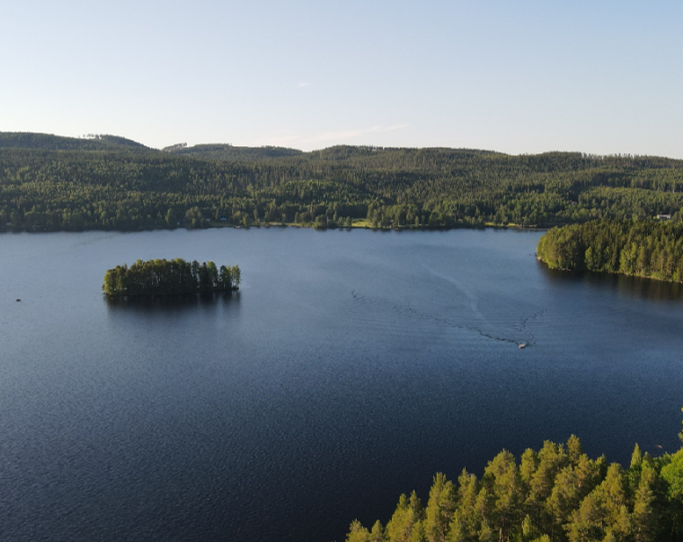In this interview, Judith shares the scene with Max Whitman, a Uppsala University doctoral student affiliated with the LANDPATHS sub-project “Forest Landscapes” in Voxnadalen, and Hanna Alfredsson, coordinator for the Voxnadalen Biosphere Reserve in Hälsingland. The conversation revolves around LANDPATHS’ research in Voxnadalen, including focus group discussions and workshops with stakeholders, aimed at exploring and promoting multifunctionality within the forest landscape.
Biosphere Reserve Voxnadalen
Hanna explains the concept of biosphere reserves and Voxnadalen’s unique role in combining natural and cultural heritage with human well-being. She emphasizes the area’s focus on sustainable forest resources, vibrant water systems, and an open landscape. Voxnadalen officially became one of the world’s 740 UNESCO biosphere reserves in 2019, and the LANDPATHS project now focuses on gathering data and fostering dialogue for sustainable development. Hanna underscores the importance of supporting research to reduce polarization in forest debates and achieve Agenda 2030 goals.
Hanna adds “Many of us here are very excited to see what this project or Landpaths can lead to and what it will lead to in practical terms for us and how it can contribute to, for example, a reduced polarization in the forestry debate. And how we can share these experiences also within the network of biosphere reserves. We are very happy to be part of this.“

Voxnadalen as a Study Object in LANDPATHS
Voxnadalen was chosen by sub-project forest landscapes in LANDPATHS due to its biosphere reserve status and commitment to sustainable forestry. Max shares insights from his research project, highlighting collaborative efforts with other researchers, such as Forest landscape subproject leader Sara Holmgren, researchers Neil Powell and Thao Do in subproject Future Imaginaries for method development, and practitioners in Voxnadalen. Their co-creative research aims to understand and promote multifunctionality in the forest landscape through open workshops and focus discussions with various stakeholders.
“We don’t really define our study. We do not come in and say that this is what we are looking at specifically, but we will try to come in with a very open mind and listen and talk to people like Hanna and a lot of other actors in the region to understand what the problems are here. What are the opportunities? What is it that is good? How can we find synergies and create innovations to promote sustainable use of the forest? And in that process understand what is a multifunctional forest landscape and how can we promote it simply?”
Creating Common Visions through Co-Creation
During one of the workshops, the research team encouraged participants to create a headline for a fictitious documentary about Voxnadalen in 2050. Examples included ‘Biosphere reserve used but not consumed,’ emphasizing intangible cultural heritage and questions of cultivation, ownership, and the relationship between them. Another headline, ‘Biosphere Reserve Voxnadalen leads the way to sustainable forestry,’ reflects the ambition to use the biosphere reserve designation as an opportunity to lead in sustainable forestry through education and other initiatives. Other headlines like ‘Diversity, multiple use, and multifunctionality’ and ‘Faith in the future grows in Voxnadalen’s’ encompass knowledge elevation beyond economic aspects, emphasizing collaboration and coordination.
“So we had quite a bit of fun with the headlines and had some that were funny as well in what is it we don’t want to see? And then there were things like ’Voxnadalen is the largest clearcut’. “
New Value Chain Contributes to Innovation and Sustainable Forestry
Both Hanna and Max stress the importance of dialogue among different actors and stakeholders to understand and promote multifunctionality in the forest landscape. They mention examples like Voxkedjan, an economic association connecting the needs of Helsinge farms for quality timber with contributions from private forest owners, supported by sawmills and processed by Voxkedjan members. The initiative demonstrates the possibilities of creating new value chains for more sustainable forestry while fostering collaboration within the sector.
“In Voxnadalen […] there is a willingness to listen to each other to a greater extent. I think that’s very good because when you start going into ‘okay, what do we mean by sustainable forestry? What is the role of forests in promoting regional development?’ That’s where you can start creating meaning and common visions and also look at building collaborations and promoting innovations,” says Max to summarize his impressions in Voxnadalen.
Multifunctionality – a difficult term in practice
In the interview, the concept of “multifunctionality” is also discussed. Max emphasizes that it can be challenging to explain to individual actors, as it is perceived as abstract. He stresses that the work towards multifunctionality does not follow a linear process with a shared vision implemented backwards. Instead, it involves asking questions and promoting innovations beyond traditional forestry, as seen in the example of Voxkedjan.
Hanna agrees and notes that the term “multifunctionality” was not common among Voxnadalen stakeholders before their participation in the project. She shares the view of creating diversity and infrastructure to promote new ideas and innovations as a path towards multifunctionality within the area, including activities like fishing, tourism, and other industries.
Understanding and Openness Foster Sustainable Forestry
Finally, both Max and Hanna emphasize the importance of working towards sustainable solutions and creating understanding and openness between different perspectives within the forestry sector. Voxnadalen serves as a model for how a biosphere reserve can actively engage in research projects to promote a sustainable future. The research team looks forward to continuing collaboration and exploring opportunities for multifunctionality in forestry in Voxnadalen and beyond.
The full interview (in Swedish) can be found below.
